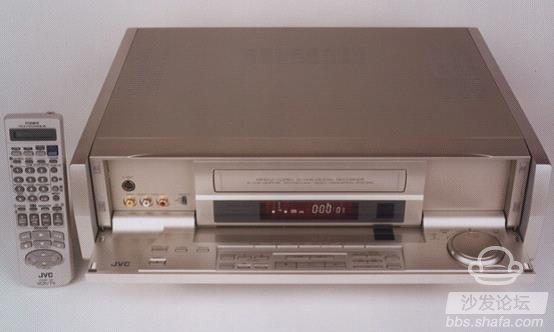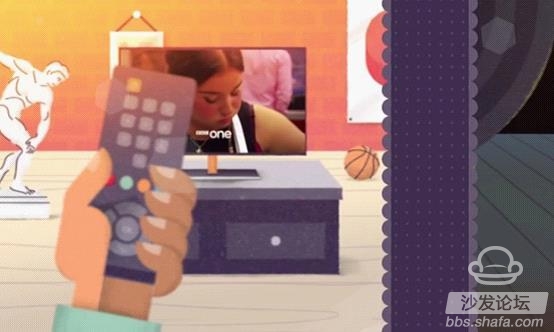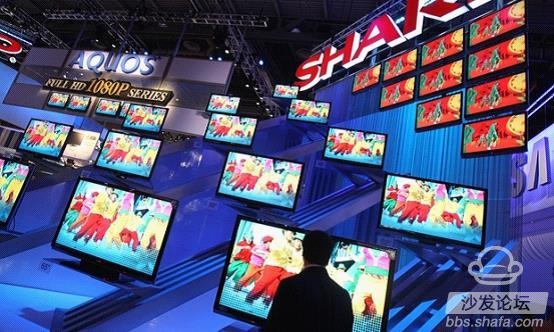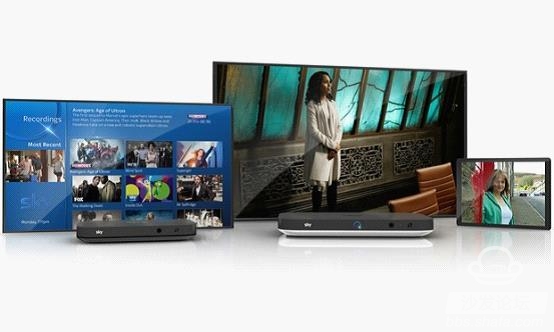Wall Mounted Cabinet,Black Wall Mount Data Cabinet,Wall Mounted Cabinet With Doors,Black Wall Mount Cabinet Shenzhen Jingtu Cabinet Network Equipment Co., LTD , https://www.jingtujigui.com
According to Ofcom's report, the British’s obsession with television ranks among the top in the world, and the number of people who consume media content using tablets has also reached new highs. The living room TV is no longer everything TV consumes, nor is it the final form. Change is triggered by a younger generation. Recent data from Childwise show that children under 5 years of age watch TV for 2.6 hours a day, reaching a record high. They watch on-demand content on tablets and other devices. Childwise also finds people aged 5 to 15 spending on the Internet. It takes more time than staying in front of the TV. 
The first generation of television is black and white. The image is granular and the quality of the image is steadily increasing with the improvement of the camera and scanning system. In 1925, John Logie Baird invented and demonstrated an enlarged mechanical scanning television. The number of scanning lines reached 240 in 1936. Each scan line scans the TV and displays an image.
It was not until 1932 that electronic television appeared. It was closer to the television we use today. It was American Philos Farnsworth who invented the electronic television. On November 2, 1936, the BBC began to provide the first regular "HD" television service, when the scan line for black and white images reached 405 lines. Today, the number of scan lines in a TV is equivalent to 1080 lines. 
Black-and-white television continued to develop until 1954 when the first color television broadcast appeared in the United States. The system uses the National Television Systems Committee (NTSC) standard to independently decode brightness and color, and black-and-white television can use the same signal.
The European color standard did not appear until 1963, which is the PLA Alternating Line. This technology is better and the ability to adapt to the weather is stronger than NTSC. By 1967, color television appeared in Europe. The second channel of BBC became the first channel in the UK to broadcast color programs.
Subsequently, the quality of color television continues to improve, the screen is getting bigger, the images are getting more and more clear, the cameras are becoming more and more sensitive, and the broadcasting capabilities are getting stronger, allowing higher-quality images to be played. 
Next TV technology has seen another major development: the shift of time, in our world "time shift" exists only in the field of science fiction.
Video tapes appeared in the 1950s. It used volume-to-reel tapes, and soon the products swept the television industry. In the 1970s, a variety of video tape recorders flourished, and the evolution of technology drove video tapes to millions of households. The original model was the Philips Model 1500 introduced in 1972.
Users can record programs and watch them at any time. This is the "time transfer", and some people even call it a "great time machine."
The VHS recorder finally won the "time transfer" videotape format battle, which helped it beat the rivals in 1999 with its DVD recorder and DVR recorder. DVD recorders have become extinct, but DVRs have continued to become popular. They have become the basis for most "time-shifting" devices and have become the basis for broadcast television recorders (which can suspend live TV). 
After the emergence of the "time transfer", the digital TV continued to set off a new revolution. Through the cooperation with the DVR, digital television cleared the way for the future.
There are many advantages over analog TV digital television. The biggest benefit for consumers is that digital TV images are of higher quality and they can also broadcast more channels on the same radio frequency. Digital TV can also provide value-added services.
In the 1980s and 1990s, a number of standards began to wreak havoc around digital television. Different countries and regions supported different standards until the first digital television broadcasting service emerged in the United Kingdom in 1998.
Then the digital wave swept more countries, analog television was turned off, and only digital broadcasting services were provided. The saved spectrum could be used for other purposes, and eventually cleared the way for the launch of the UK's 4G mobile data service. 
When digital television was in full swing, the 16:9 widescreen format began to replace the original 4:3 format. The widescreen format is more suitable for watching movies on TV.
In 1998, the United Kingdom began to appear the first widescreen broadcast program. Of course, it is also a digital television. Prior to the introduction of digital television in the UK, there were few widescreen TV programs. The number of broadband TV programs began to increase rapidly around the year 2000, eventually eliminating 4:3 TV programs.
From 2000 to 2003, most of the UK’s TV broadcasters had already moved to 16:9. Then they launched the HD channel. The first one was the BBC HD and Sky’s HD channels. It was already 2006 and it passed. Satellite broadcasting. Not long after, Channel 4 ITV, Channel 5 and other channels also followed suit. All provided HDTV channels. Ground HD broadcasting did not appear until 2009. Freeview HD was at the forefront.
HD TV and 1080i TV broadcasts have five times as many pixels as SD programs. Its images are more vivid and clearer. When the display becomes larger, the images will not be blurred in the normal viewing distance.
After accepting HDTV standards, the United Kingdom lags behind the United States. In 1996, the United States began its first HD broadcast program. In 1998, it officially began to officially accept HDTV. The first HDTV broadcast in Europe was not born in Belgium until 2004.
Ultra HD (UHD, also known as 4K) achieves a resolution of 3840 x 2160. If it is equivalent to 2000 lines multiplied by 4,000 lines in old-era TV terms, it is obviously the successor to the 1080i HD format. Is it really? I am afraid it is still too early to say that 3D TVs have come and gone. They have not been truly successful. 
Now we begin to approach the new television revolution: Location shifts.
The change stems from the emergence of new devices in 2005 (such as the Slingbox), where you can watch streaming TV shows at home, regardless of location. The "anytime, anywhere" viewing mode is respected by many services such as Netflix and BBC iPlayer. If you want to see what you see, when you want to see it, when you want to see it, where you want to look, and where you want to look, if you have a net, this model has proven to be popular.
Now even traditional broadcasters have begun to support users to transfer locations. For example, Sky recently launched the Q system in the United Kingdom. Users can use the Internet to watch streaming TV programs from their homes. They can also download programs to their tablets or watch them on the APP. It is a supplement to Sky's Go streaming media service and video on-demand services.
BBC's iPlayer, ITV Hub, ALL4, Virgin TV and other TV stations all started to follow suit. All users in the UK can transfer content anytime, anywhere.
As with the previous “time transfer,†“location transfer†has become an important change in the television experience. In the era of on-demand service delivery, TV can only continue to play an important role in this, and it must withstand countless instant entertainment forms of competition.
If the service is to achieve "location transfer," the biggest obstacle is copyright protection, which must be authorized by the regional film and television studios.
For example, the streaming service Netflix was recently forced to withdraw its own software, which provides tools that allow UK users to watch programs through the U.S. library, bypassing the restrictions of programmers; this shows how powerful the regional restrictions are.
In the UK, Sky Q and competitors may go beyond technology companies and provide them with "location transfer" services. It will become possible to watch TV anywhere in 2016.
The arrival of TV's sixth revolution: the arrival of the times anytime, anywhere
In the 1920s, TV was officially born, and since then it has undergone five major changes, each time changing the audience's habits. Now that we are undergoing the sixth transformation, a TV omnipresent world is coming.
Content has shifted in position. Watching online TV on devices is more appropriate for people. This year, with the growth of on-demand content and the launch of new services (such as Sky Q), all TVs will undergo a shift in position, TV will usher in the sixth revolution, and new ways of behavior will continue to be consolidated and strengthened.
Color era
Time shift
Digital Television
Widescreen and HD